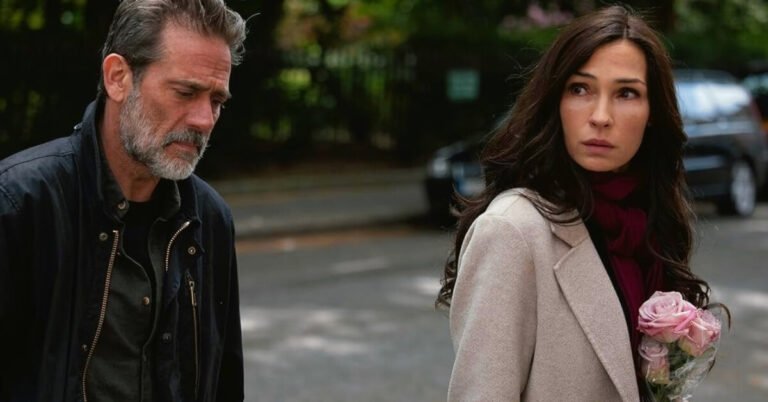In the shadowy corners of Europe’s most picturesque cities, a series of grotesque murders unfolds, leaving a trail of blood and mystery in its wake.
The Postcard Killings, a gripping cinematic adaptation of James Patterson and Liza Marklund’s novel, delves into this macabre world with a narrative so intricate and dark that it’s hard not to be trapped from the get-go.
Jeffrey Dean Morgan embodies Detective Jacob Kanon, a man haunted by the brutal murder of his daughter, navigating through the labyrinth of clues and corpses. But what’s even more disturbing is the artistic signature the killers leave behind, a morbid tribute to renowned art, painting a chilling postcard of death.
Critics and audiences alike find themselves at the edge of their seats, not just because of the compelling storyline or the stellar cast, which includes the likes of Famke Janssen and Cush Jumbo, but due to the haunting question: Could such a tale of horror be rooted in reality?
James Patterson’s reputation for weaving fiction that feels alarmingly real only adds to the enigma. But before you cancel your European getaway, let’s delve into the heart of this mystery: Who are the real culprits orchestrating this symphony of horror?
[*Spoiler alert*]
The killers in ‘The Postcard Killings’ are not mere figments of a writer’s imagination. They are Sylvia and Mac Randolph, or more accurately, Simon and Marina Haysmith, a duo whose twisted bond and disturbing past push them into a spree of artistic yet horrific murders. The Postcard Killings is not based on true events, but kudos to the writers for the mind-blowing depiction of a detective thriller.
A Portrait of Murder: The Twisted Tale of the Haysmith Siblings
The name James Patterson is synonymous with suspense, and The Postcard Killings is no exception. The narrative takes us on a whirlwind journey across Europe, with Detective Kanon piecing together the fragments of a puzzle that’s as disturbing as it is intriguing.
“The film has no connection to the real ‘Postcard Killer,'” clarifies the storyline, distancing itself from any true crime associations and delving deep into the abyss of the human psyche.
In collaboration with Marklund, Patterson crafts a tale that’s original yet terrifyingly plausible.
The real intrigue, however, lies not just in the murders but in the murderers themselves. “Sylvia and Mac, whose real names are Simon and Marina Haysmith, were behind the gruesome killings of couples across Europe,” reveals the shocking twist.
These siblings, bound by a dark past and an even darker purpose, embark on a killing spree that’s not just a crime but a twisted form of artistry. Each murder scene is meticulously arranged to mirror famous artworks, a morbid gallery showcasing their disdain and detachment from the world.
But the question that Patterson subtly poses through this narrative is profound: What drives such individuals to the brink of such heinous acts?
Is it their tumultuous upbringing, the societal rejection, or a deeper, more intrinsic flaw within? The Postcard Killings doesn’t just stop at revealing the killers; it forces us to confront the uncomfortable abyss that lies within the human soul.
Reflections in the Dark: What Lurks Beyond the Finale?
As the final credits roll, one can’t help but ponder the fate of the Haysmith siblings. While Simon’s demise seems inevitable, Marina’s fate hangs in the balance, a loose thread in an otherwise tightly-knit narrative.
Did she succumb to her injuries, or is she out there, a shadow amongst many, waiting to paint her next macabre masterpiece? And what of their father, the man whose teachings perhaps set this tragic tale into motion?
The Postcard Killings, with its blend of art, mystery, and horror, leaves us with more than just chills. It beckons us to question the very nature of crime, art, and the human condition.
As you turn off your screen or close the book, ask yourself: What is the true price of understanding such darkness?
When art imitates death, where do we draw the line? Share your thoughts, dive into the discussion, and let the mystery of The Postcard Killings linger a little while longer.


Recent Comments